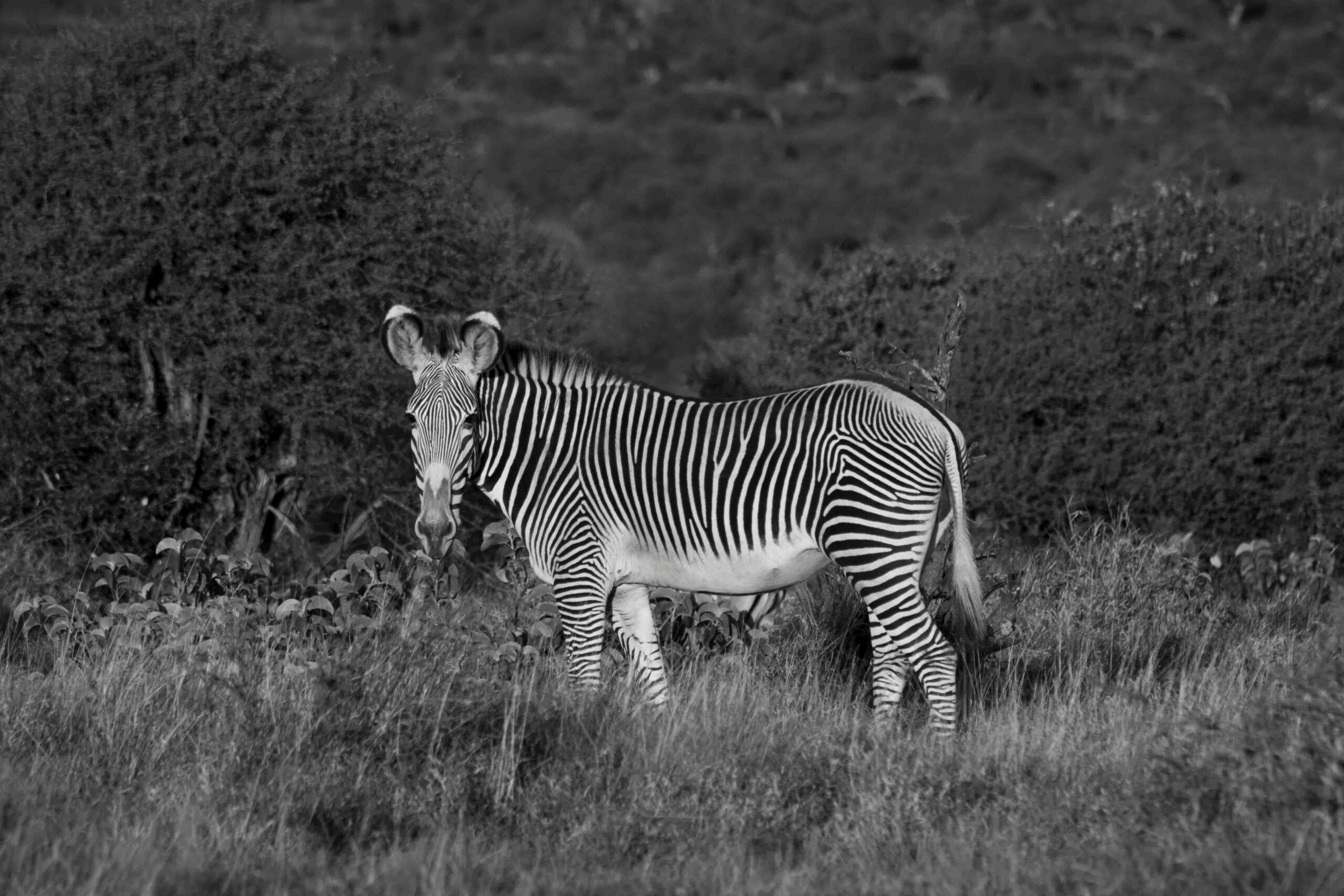Across the wide and dry lands of northern Kenya, a special animal walks through the open plains, the Grevy’s Zebra. At first glance, it looks like any other zebra, but it is quite different. Its stripes are thinner and closer together; its belly is white, and its tall body stands out proudly in the sun. It has big, round ears that turn like little satellites for sensing danger.
Grevy’s Zebra is the largest and rarest zebra in the world. Unlike the common plains zebra that lives in large herds, Grevy’s Zebras are more independent, moving in smaller groups across the dry grasslands. They are commonly found in northern Kenya, making Kenya one of the safe homes for this beautiful animal. Seeing one in the wild is a rare and unforgettable safari moment.
What’s special about the Grevy’s Zebra
Below are reasons that make the Grevy’s Zebra special:
- The rarest zebra in the world – It is endangered, with fewer than 3,000 left and commonly found in northern Kenya.
- It has different stripes – Its black and white stripes are very thin and close together, unlike the wider stripes of plains zebras and the belly is white with no stripes.
- It is bigger and taller – It is the largest zebra, weighing up to 450 kg with long legs and a strong build.
- It has big ears – Its round, radar-like ears are much larger than those of other zebras.
- Have an independent lifestyle – Unlike plains zebras that live in big herds, Grevy’s Zebras live alone or in small groups.
- Grevy’s Zebra is commonly found in Dry Lands – They are specially adapted to arid areas of Kenya and can live without water for longer periods.
- Termed as conservation symbol – They are endangered, protecting them is an important conservation mission in Kenya, especially in Samburu and Laikipia.
Why are Grevy zebras becoming extinct?

The Grevy’s zebra is one of Africa’s most endangered species, with fewer than 3,000 individuals remaining in the wild. This dramatic decline is due to several interconnected threats:
Habitat loss and fragmentation
Grevy’s zebras inhabit semi-arid grasslands and savannas in northern Kenya. Their habitat has increasingly been encroached upon by human activities such as agriculture, infrastructure development and urbanization. Encroachment leads to habitat fragmentation, making it difficult for Grevy’s zebras to find suitable areas for feeding, breeding and migration.
Competition with livestock
The introduction of domesticated grazers like cattle has intensified competition for resources such as water and grazing land. Overgrazing by livestock depletes vegetation, reducing the availability of food for Grevy’s zebras.
Drought and climate change
Grevy’s zebras are adapted to arid environments and can survive without water for several days. Prolonged droughts, exacerbated by climate change, are leading to reduced water and degraded grazing areas.
Poaching and illegal hunting
Grevy’s zebras were hunted for their striking skins, which were highly valued. Hunting has declined and poaching still occurs in some areas, leading to a decline in the number of Grevy zebra.
Outbreak of diseases
Disease outbreaks such as anthrax have periodically affected Grevy’s zebra populations. These diseases lead to significant mortality, especially in already stressed populations.
Where are Grevy zebra found in Kenya?

Kenya hosts the largest remaining population of Grevy’s Zebras in the world and these regions are vital for their survival.
Key areas to spot Grevy’s zebras
The Samburu National Reserve
The Samburu National Reserve is famous for its unique wildlife, including the Grevy’s Zebra. Visitors see Grevy’s Zebra, grazing in small herds or wandering independently across the plains.
Buffalo Springs & Shaba Reserves
It is located close to Samburu and is home to strong populations of Grevy’s Zebras. The open grasslands and sparse acacia trees allow for easy sightings.
Laikipia Conservancies
Conservancies like Lewa, Ol Pejeta and Ol Ari Nyiro provide safe habitats through strong conservation efforts. Many local and international organizations work together to protect Grevy’s Zebras from poaching and habitat loss.
Marsabit and Isiolo regions
These more remote areas of northern Kenya have arid plains and sparse grasslands that are ideal for Grevy’s Zebras. Human populations are lower in these regions, providing critical space for zebras to roam and survive.
Grevy’s Zebra is a survivor with a story worth telling, with its fine stripes, tall legs and large ears, carries elegance that sets it apart from other zebras. Every sighting of Grevy’s Zebra on safari is a photo opportunity and celebration of resilience and a reminder of why protecting wildlife matters.

